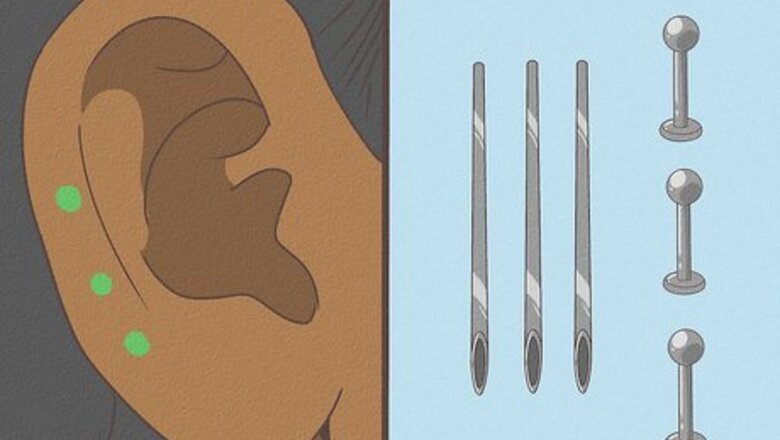
views
X
Trustworthy Source
PubMed Central
Journal archive from the U.S. National Institutes of Health
Go to source
[2]
X
Research source
While your experience may be no better, it is not necessarily advantageous to seek a professional. Maintaining the piercing after requires basic hygiene at the wound site, and avoiding any irritants or corrosive substances at the ear.
Preparing for Piercing
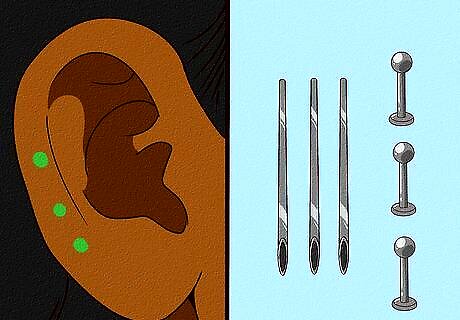
Acquire materials and choose your piercing site carefully. There are significant health risks involved in cartilaginous piercings and minor complications are frequently reported. There are often no minimum qualifications for one to practice body piercing, which represents a serious health concern. The health risks associated with cartilaginous piercing are not significantly higher than with a lower piercing of the fatty lobe tissue.
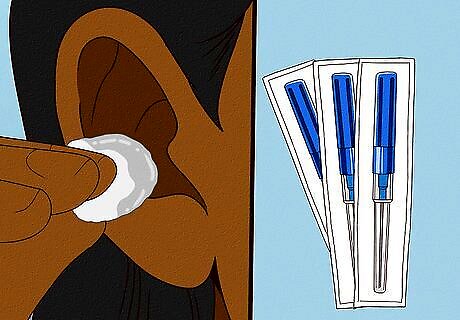
Sterilize your ear and equipment. Purchasing sterilized, sealed piercing needles is key. Your jewelry should not be made of nickel or any metal you may have an allergic reaction to and should be a gauge smaller than the hollow piercing needle.
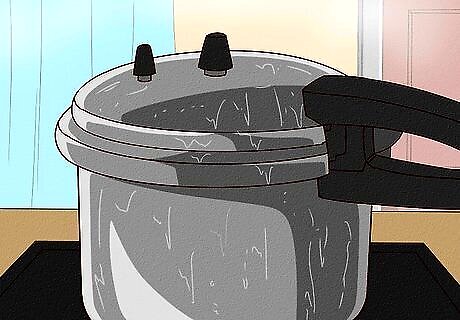
Use an autoclave to ensure absolutely sterile materials. You can use a pressure cooker on objects to achieve a similar effect, by setting a high pressure and temperature with water in the cooker so as to steam disinfect the items to be used. Soaking in a disinfectant like alcohol or dilute bleach will sterilize the materials, though not as effectively.

Set up a sterile area to work in. Have gloves, topical disinfectant to prep the site (iodine is preferred), a marker to designate the piercing site, a stopper to help prevent the needle from poking your scalp. Set up a sterile workbench for the materials to rest on, as well as a separate site for handled materials to be placed on. Do not handle non-sterile items and sterile ones interchangeably.
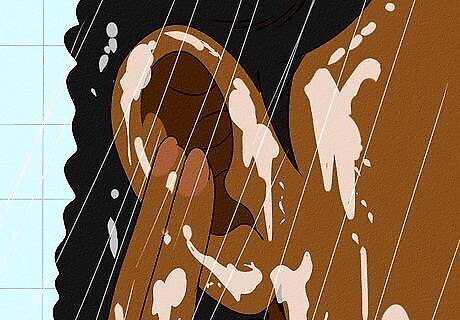
Clean your ear using an antibacterial soap. The location is difficult to clean, so consider just taking a shower. Hot steamy water also helps to loosen your skin, making the piercing a bit less painful. Clean the area thoroughly, and make sure that the site is marked with an indelible marker or pen.
Piercing the Site
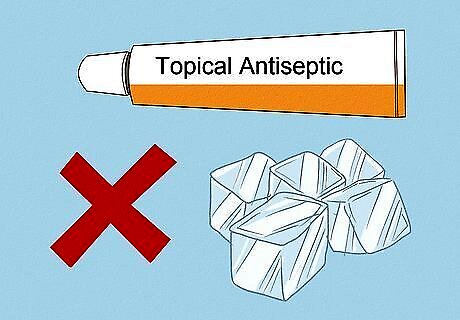
Avoid topical anaesthetics or numbing agents. These will not reduce the overall pain significantly as these topical solutions do not affect the avascular cartilage. Ice is not recommended. It causes the skin to contract. Contact with the ice pack or ice itself can cause dermal tissue damage and make it more difficult to target the site or maintain sterility. This will hurt. If you wish to avoid pain, do not put a large hollow needle through any part of your body, and do not pay anyone to do this for you or to you if you truly wish to avoid a wound in your ear.
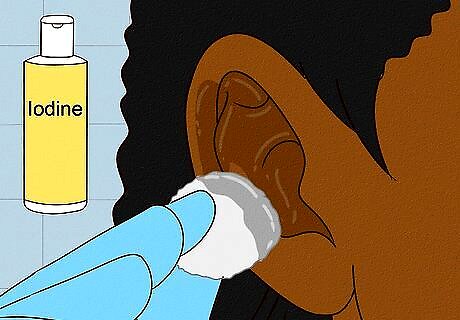
Apply a topical antiseptic like iodine to the ear. Apply liberally and cover the back of the ear as well. Avoiding infection is key as intervention for infections resulting from piercing often requires draining, surgery, and the removal of the piercing, and symptoms include severe pain and fever.
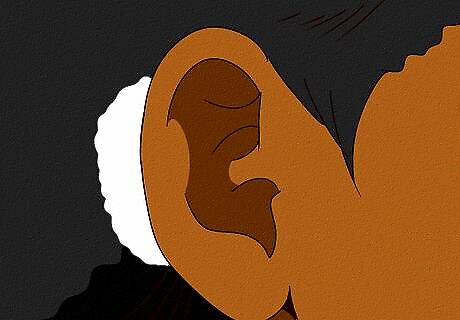
Place a stopper such as a sterile cotton ball behind the ear so that way the needle does not poke the scalp. Avoiding discomfort or contact of the needle with any unsterilized or unintended surfaces is critical to avoiding infection. A friend can be extremely useful with this part, as placing and holding the stopper and performing the piercing can require some dexterity.
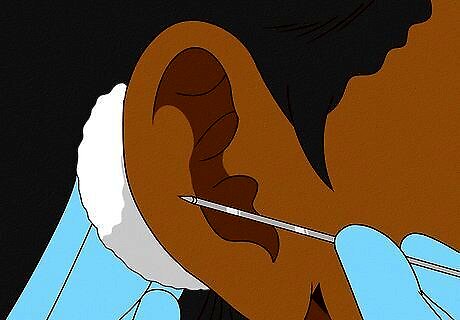
Push the needle through the ear. After breaking the first layer of skin, make sure the needle is angled correctly to push through as you like it. There will be resistance, and a total of 3 distinct pops as you pierce the skin, cartilage, and then skin again.
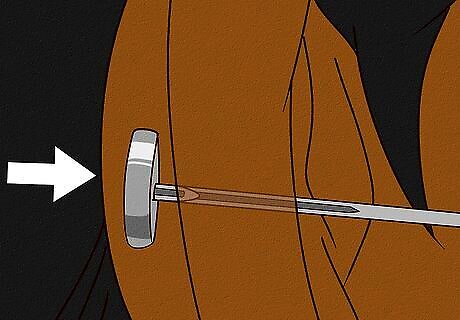
Have the jewelry ready and sterilized, and put it in the back of the hollow needle. Make sure your needle is one size bigger than the jewelry, so you can easily do so. Again, avoid the use of any metal you have an allergy or sensitivity to, as simple contact dermatitis from metal exposure can morph into an infection with repeated contact of the wound site.
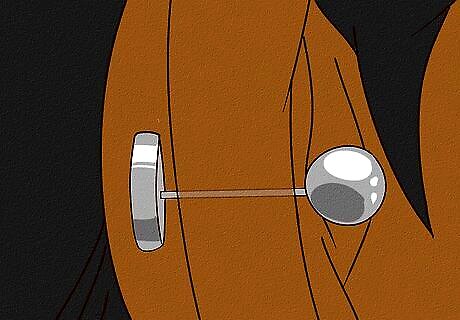
Pull the needle out of your ear. This should leave the jewelry in your ear. Screw the ball or holder into place to hold the jewelry there and maintain the piercing. Do this quickly, as the process is painful and will require repeating at a different site if you make a mistake and wish to avoid mangling your cartilage or inviting infection with a larger wound on your ear.
Maintaining the Piercing
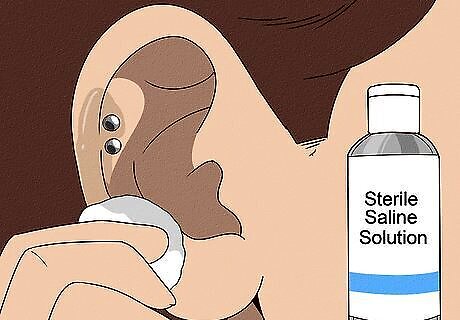
Wash with a sterile saline solution twice a day. Don't pick at any crust or scabs that will form. It can take up to a year for the wound to heal completely. Poor blood flow in the area of the upper cartilage of the ear keeps the risk of infection high and the rate of healing low during the entire process.
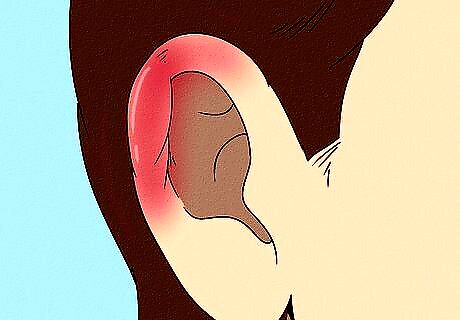
Keep an eye on the piercing site. While keloids, deposits of skin, and some malformation from the pierced cartilage are expected, redness, swelling, heat, or oozing from the wound that persists for days is not. See a doctor if symptoms last as long as a week, as courses of antibiotics and surgical intervention may be required, and average hospital stays are over two days.

Avoid using sterilizing or antimicrobial solutions like rubbing alcohol or hydrogen peroxide to continue cleaning the wound site. These solutions kill living cells and can damage the capillaries and healing tissue in the ear. Keeping the site clear of foreign debris and clean will help significantly reduce the risk of infection.

Anticipate cartilage fracture, whether a piercing gun is used or a piercing needle is administered by hand. However, for a number of piercings of specific structures of the ear a piercing gun cannot find adequate purchase, as they are designed around use on the earlobe. Seek immediate medical attention if ear deformities begin appearing.




















Comments
0 comment